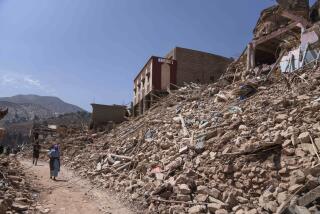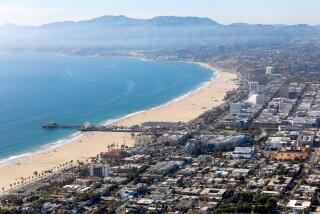National Perspective : A Practical Fortress
Since the tragic bombing of the Alfred P. Murrah Federal Building in Oklahoma City on April 19,1995, interest has grown in making public buildings less vulnerable to terrorism. Far from being fortified bunkers or ugly hulks, a bomb-resistant building can look almost ordinary, designed not to take the full force of a bomb blast but rather roll with it. Although these buildings are not completely bomb-proof, their design minimizes damage and can reduce deaths and injuries.
WHAT MAKES A BUILDING BOMB-RESISTANT
Reinforced floors: As a precaution against bombs detonating inside the building, shock-absorbing rubber spring pads are placed between the horizontal girder and floor panel. These pads are attached using a special bonding agent that is designed to tear at a calibrated amount of pressure.
Circular base: A circular design of the building’s base maximizes the building’s capacity to deflect the force generated by a bomb blast.
Reinforced columns: Rounded columns reduce the force of a blast by as much as 40% compared to rectagular columns. All other columns are also reinforced with steel.
Security measures: State-of-the-art surveillance equipment and security measures help stop a bomber from getting close to the building. Devices used: Encoded ID badges, portable air samplers.
Portable air sampler is used to detect residual chemicals from explosives such as nitrite and TNT.
Friction tracks and swinging windows: Instead of designing walls to take the full force of a blast, “friction tracks” are installed to allow entire wall panels to slide on them, allowing the force of the blast to pass through the building. The tracks have brake shoes built in to absorb most of the blast, deflecting pressure away from the columns. Hinges allow windows to swing with the force of a blast, preventing the glass from turning into deadly shrapnel.
Buffer zone: Distance is created between the building and potential bomber. At least a 100-foot area is needed between the building and the nearest unguarded area that a bomber may park a van or leave a package containing a bomb.
Anti-vehicle barricades: Installed at entrances of parking structures.
Concrete planters: Strategically placed in the open buffer area to prevent a bomber from ramming a car or truck bomb into the building.
BOMB INTENSITY
The blast from a bomb with 1,500 pounds of explosive produces 350,000 pounds of pressure on a wall 25 feet by 12 feet from a distance of 100 feet.
REALITY CHECK
Existing structures can be retrofitted to resist bomb blasts. Although not all of the design elements of a bomb-resistant building can be applied, swinging windows may be enough to prevent the kind of extensive damage that caused the collapse of part of the federal building in Oklahoma city.
Source: Marc S. Caspe Co.; Clark Staten, Emergency Response & Research Institute.
More to Read
Sign up for Essential California
The most important California stories and recommendations in your inbox every morning.
You may occasionally receive promotional content from the Los Angeles Times.










